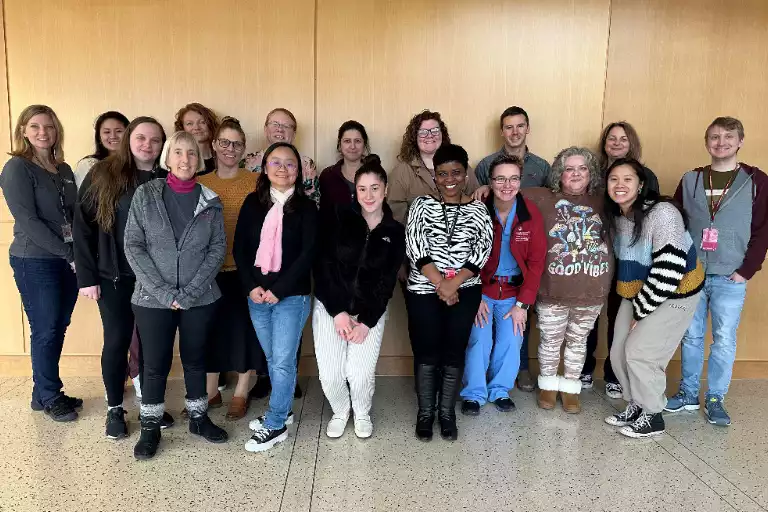By IU Simon Comprehensive Cancer Center
September 05, 2024
BC² plans to integrate data pipelines to enhance access and usability of disparate data sources
The Biospecimen Collection and Banking Core (BC²) at IU Simon Comprehensive Cancer Center expertly manages biospecimens for cancer research, integrating efforts from the Tissue Procurement Core, Komen Tissue Bank, and more. Their key services include sample collection, storage, distribution, and maintaining clinical annotations in a secure database.

To better serve the cancer center and its researchers, BC² is introducing new technology to integrate data pipelines and disparate data silos, enhancing its capabilities in sample and data storage, and distribution. This integration will streamline biobanking efforts, improving usability and search functionality to better support both basic and translational research.
BC² director Anna Maria Storniolo, MD, and her team sought a solution to unify BC²'s complex and disconnected data, which would enable researchers to address complex questions more efficiently. As collection and processing biological samples evolves with advancements in clinical care, technology must manage and interpret increasing complexity, particularly with molecular markers. Linking genomic data with sample information and clinical annotation is vital to determine clinical significance, focusing on actionable mutations. This involves organizing data into understandable formats and extending knowledge through integration with widely available resources.
To address this challenge, Storniolo's team has partnered with Manifold, whose platform specializes in managing research data, to establish a dedicated cancer-specific data system. This new system equips the biobank team with centralized tools to swiftly address complex data needs for researchers.
Previously, when a scientist required data on patients with specific criteria—like age, cancer biology details, and treatment type—it could take several days to a week to determine how many samples matched the criteria, their locations, and their availability. Now, with this advanced technology, users can get answers in minutes instead of weeks.
In a recent webinar, Storniolo, along with Emily Nelson, data and regulatory team manager and ORIEN program manager, discussed the significant impact this solution is expected to have. Nelson explained how researchers are now approaching her team with highly specific requests to test precise hypotheses. For example, one researcher recently sought "biopsy samples from colorectal cancer patients with BRAF V600E mutations treated with encorafenib in the metastatic setting prior to collection." Previously, fulfilling such a narrow request would involve manually reviewing hundreds of patient charts. But with this new technology, which unpacks omics data and analyzes treatment and diagnostic histories, the process will become far more efficient.
As precision medicine advances, the integration of multimodal data—such as genomics, imaging, and pathology—becomes increasingly vital. The challenge is to ensure this complex information is both accessible and understandable, even for those without deep domain expertise in every area or advanced computational skills. Nelson underscored this point, noting, "As precision medicine grows, we're tasked with understanding key aspects of other domains," highlighting the critical role of technology in simplifying complex data.
Later this year, the BC² team will invite cancer center researchers to utilize this new technology and explore available data sets to power their research projects. Stay tuned for monthly updates on what to expect and how to engage with these new tools.
For more details about this ongoing effort or the BC², contact Jill Henry at jihenry@iu.edu or 317-278-2829.




